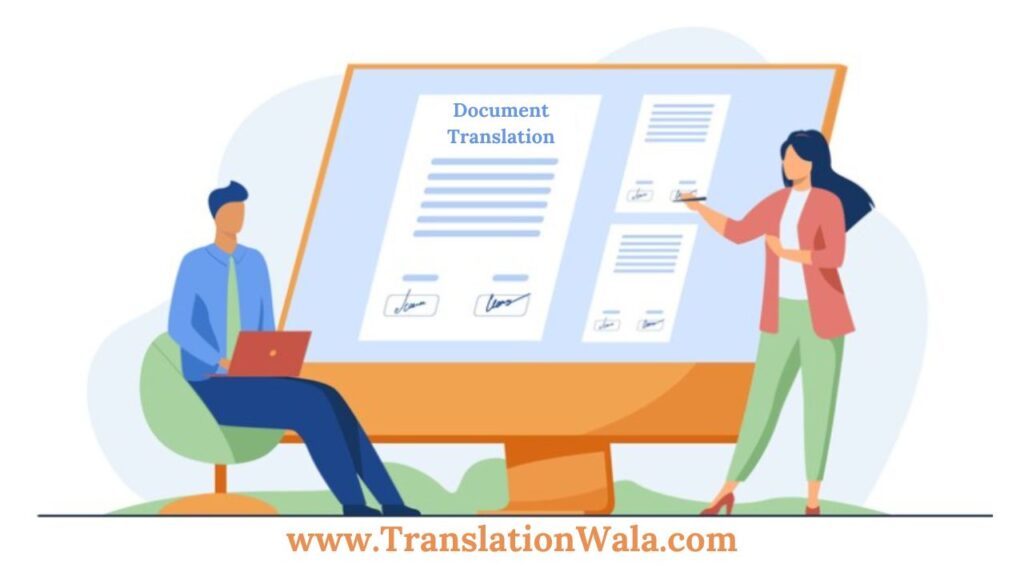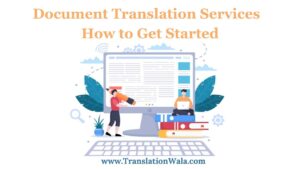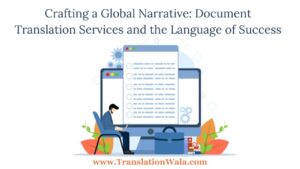Document Translation: In today’s globally linked world, companies of all kinds are going global to reach new customers and form relationships around the world. However, being able to communicate clearly across languages is necessary to be successful in the world market. When this happens, paper translation comes in handy.
The Importance of Document Translation
The process of Document Translation is changing written text from one language to another. A lot of different kinds of papers are included, from legal contracts and financial reports to marketing materials and how-to guides. Businesses need accurate versions that take into account different cultures in order to:
- Expand into new markets: Businesses can connect with possible customers, partners, and investors more effectively by turning their papers into the languages of those groups. It gives them more chances to make money and brings in more customers.
- Enhance customer satisfaction: Customers like being able to use their own language to get information and services. Customers are more likely to be satisfied and loyal if they can understand product directions, support materials, and marketing messages that have been translated.
- Improve internal communication: Multinational companies with workers who speak different languages need to make sure that communication is clear and consistent between offices and departments. Translating documents helps people who don’t speak the same language work together.
- Strengthen brand reputation: Translations that are done professionally and correctly are good for a company’s image. They show that they care about the little things, are respectful of other cultures, and want to give good products and services to people all over the world.
Choosing the Right Document Translation Approach
You can translate documents in two main ways: by using human translation services or by using machine translation tools.
Human Translation Services:
Human translation services are the most accurate and sensitive to different cultures. Human translators are very good at language and can pick up on subtleties. They make sure that texts are not only correct but also express the right tone, style, and cultural context.
Machine Translation (MT) Tools:
In the past few years, machine translation (MT) tools have come a long way, and now they can often translate words surprisingly accurately. They are especially helpful when translating a lot of text or languages where there aren’t many human translators available. However, MT tools may have trouble with idioms, cultural references, and complicated language patterns, so post-editing by a person is often needed.
Also Read: How to Localize Your App for Success in New Markets!

Things to think about when picking a translation method:
- The complexity of the documents: Legal or technical papers may need to be translated by humans, while easier documents may be able to be translated by MT tools.
- The desired level of accuracy: The best option is to have a person translate mission-critical papers or documents that have big cultural effects. MT tools can be a cheap way to edit papers that aren’t very important.
- The availability of human translators: MT tools may be the only way to go for languages where human interpreters are hard to find.
- The time constraints: When you need translations quickly, MT tools might be able to do them faster than people.
Also Read: How to Choose the Right Website Translation Services
Advice on How to Document Translation Well
- Plan your translation needs in advance: List the papers that need to be translated and give yourself enough time to do it.
- Choose a reputable translation provider: Look into different translation companies or independent translators and pick one that has experience in the same field and language pair as you.
- Provide clear instructions: Tell the translator exactly what you need, including the goal of the translation, the audience you want to reach, and any special style or language rules.
- Review the translated documents carefully: Once you get the versions, read them carefully to make sure they are correct, easy to understand, and fit for the culture. You might also want to have someone who speaks the target language read the translations.
- Update your translations regularly: As your business grows and your papers change, you should make sure to keep your translations up to date to keep them accurate and consistent.
Conclusion
Any business, no matter how big or small, that wants to do well in the global market needs to Document Translation. Businesses can make sure that their papers are translated correctly, quickly, and with cultural sensitivity by selecting the right translation method and following best practices. This way, they can get their message across to people around the world.



